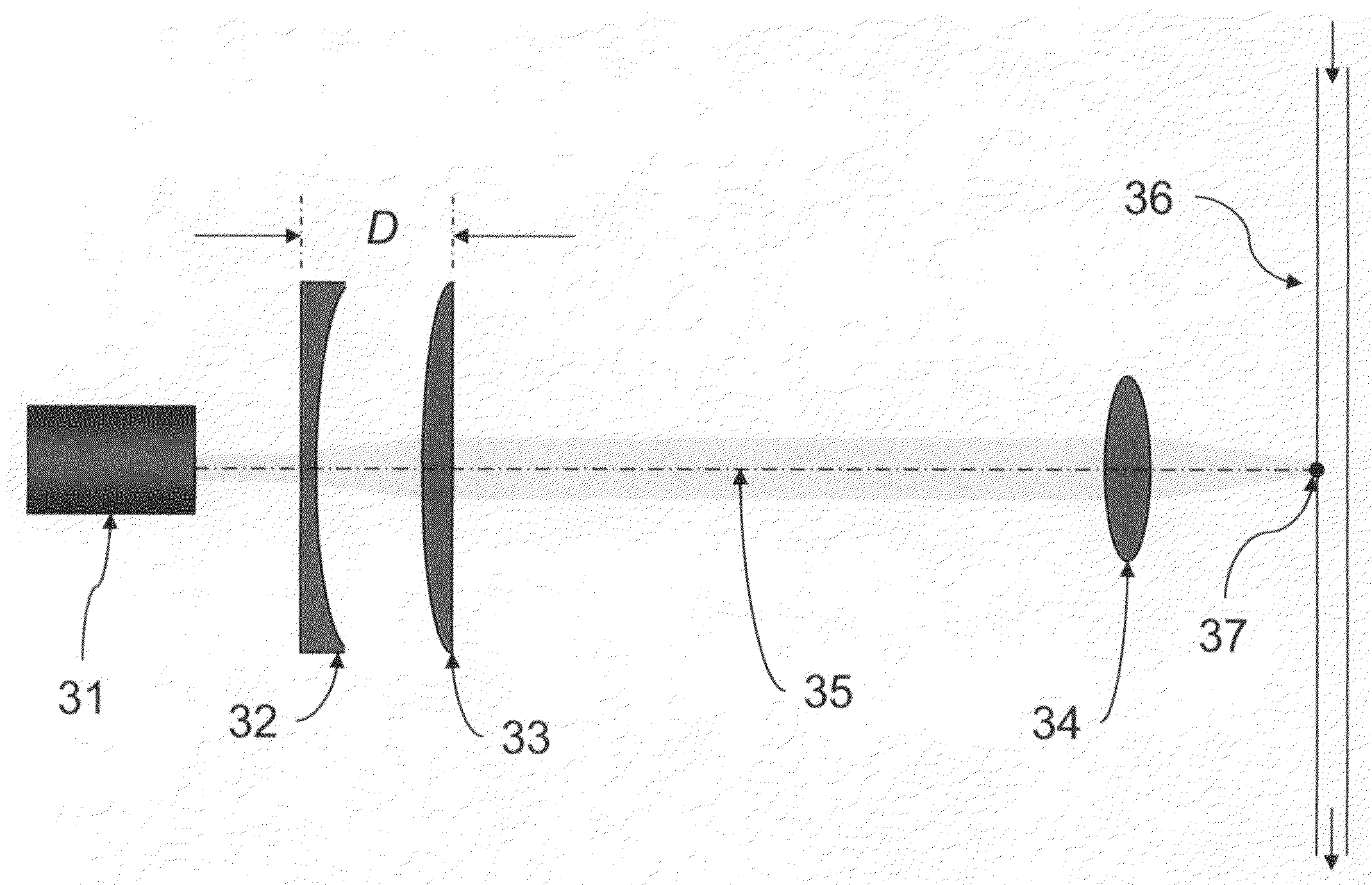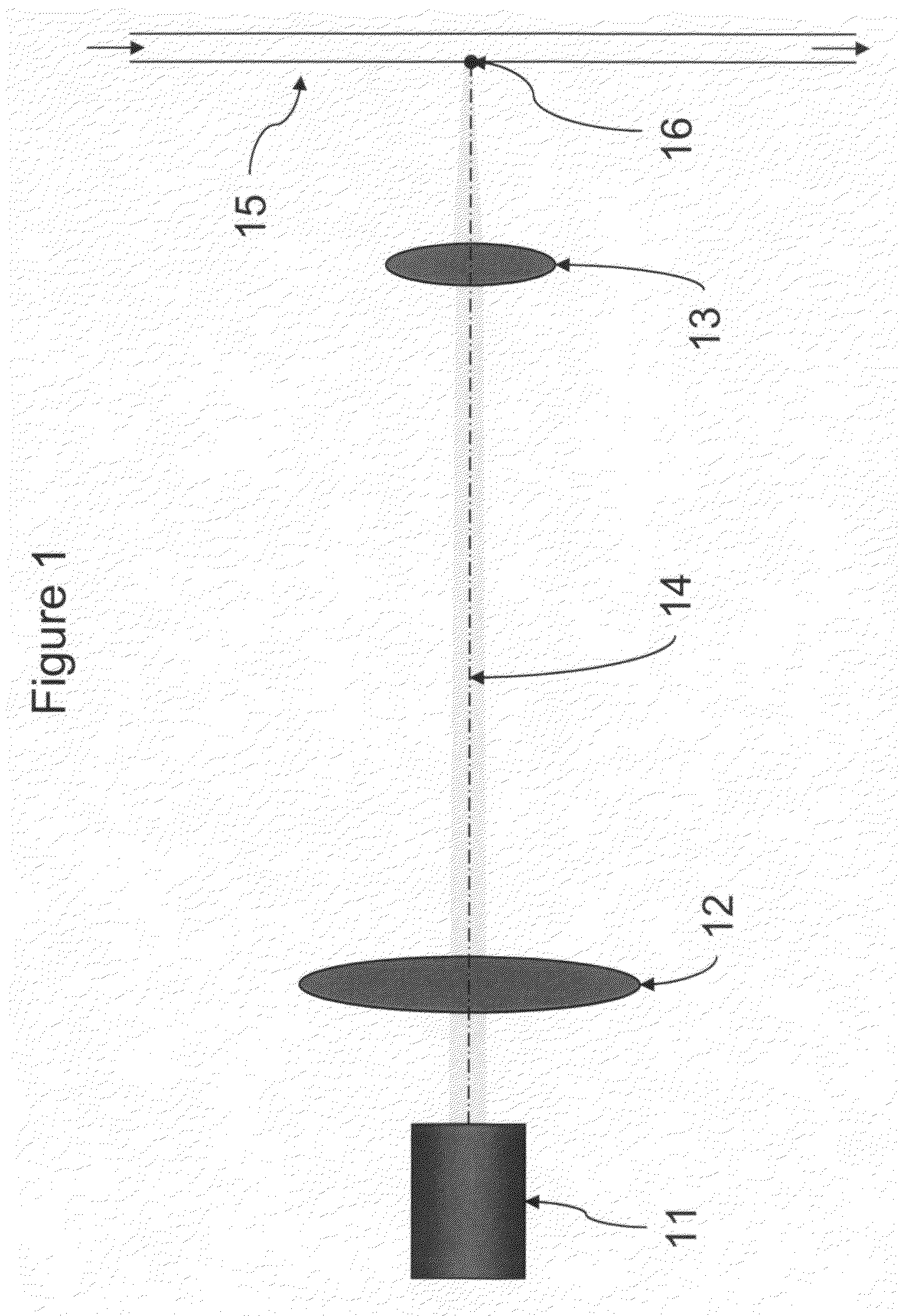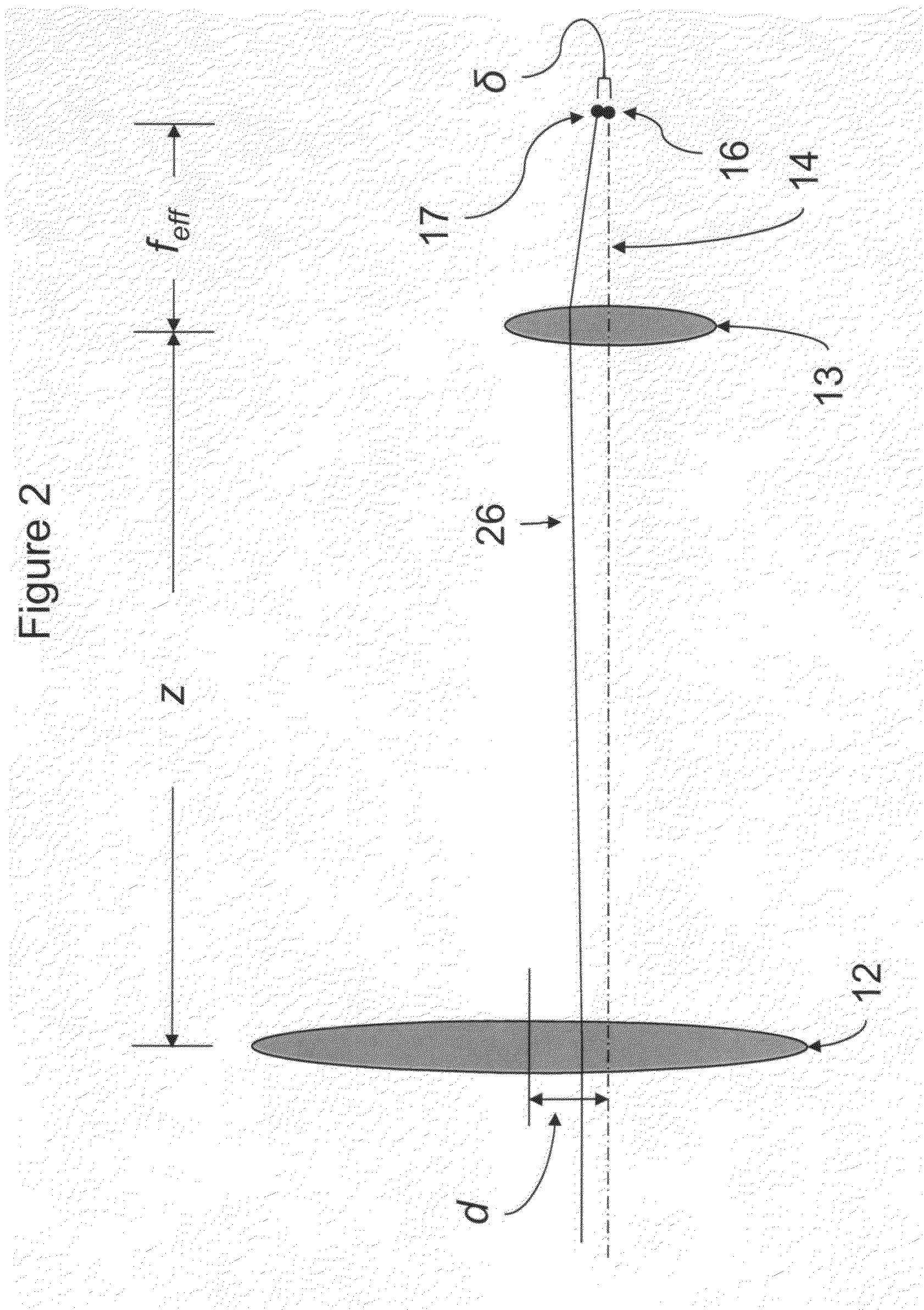Beam-adjusting optics
a beam-adjusting and optics technology, applied in the field of optics, can solve the problems of difficult implementation of independent adjustment of the focal spot of each laser, poor optical performance, and high cost of differential micrometers, and achieve the effect of precise positioning of the focus spo
- Summary
- Abstract
- Description
- Claims
- Application Information
AI Technical Summary
Benefits of technology
Problems solved by technology
Method used
Image
Examples
Embodiment Construction
[0023]The following definitions are provided for clarity. Unless otherwise indicated, all terms are used as is common in the art. All reference cited herein, both supra and infra, are incorporated herein by reference.
[0024]As used herein, the “equivalent focal length” or “combined focal length” of a compound optical system refers to the focal length of a compound optical system, given as if it were a single optical element. The equivalent focal length is the distance from the secondary principle point of the compound optical system to the focal point. The equivalent focal length, feq, for a combination of two components is related to the focal lengths of the two components by the following equation:
feq=f1·f2f1+f2-d,(1)
wherein f1 and f2 are the focal lengths of the individual components and the d is the distance between the components. The equivalent focal length of a optical system containing more that two components can be calculated by first calculating the equivalent focal length...
PUM
 Login to View More
Login to View More Abstract
Description
Claims
Application Information
 Login to View More
Login to View More - R&D
- Intellectual Property
- Life Sciences
- Materials
- Tech Scout
- Unparalleled Data Quality
- Higher Quality Content
- 60% Fewer Hallucinations
Browse by: Latest US Patents, China's latest patents, Technical Efficacy Thesaurus, Application Domain, Technology Topic, Popular Technical Reports.
© 2025 PatSnap. All rights reserved.Legal|Privacy policy|Modern Slavery Act Transparency Statement|Sitemap|About US| Contact US: help@patsnap.com



